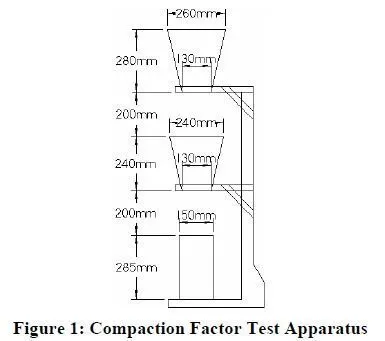The Powers remolding test (Powers 1968; Scanlon 1994; Wong et al. 2000) is similar to the Vebe consistometer. The test was develop by Powers and first presented in 1932. The test has been standardized by the US Army Corp of Engineers as CRD C6-74.
The test apparatus consists of a 12 inch diameter cylindrical mold mounted on a standard drop table, described in ASTM C124 (which was withdrawn in 1973). A separate 8 ¼ inch diameter ring is attached at the top of the cylinder, as shown in Figure 11. The concrete sample is compacted in the standard slump cone inside of the inner ring. Like the Vebe consistometer, a clear plate attached to a vertical stem rests on top of the concrete. The number of drops required to remold the concrete to the shape of the outer cylinder is a measurement of the remolding effort.
The ring attached to the outer cylinder restricts the movement of the concrete and allows for the determination of the plastic shear capacity of the concrete mix. A mix with high shear capacity easily passes under the ring, whereas mixes with low shear capacity tend to clog and result in greater required remolding effort. It is possible that two mixes that require the same remolding effort when the ring is removed require different remolding efforts when the ring is in place.
Research has shown that the Powers remolding test is more sensitive to changes in workability than the slump test (Scanlon 1994).

Advantages:
The Powers remolding test is a dynamic test and is suitable for low slump concretes.
The results of the test are obtained directly.
Disadvantages:
The drop table must be mounted on an object of sufficient mass to absorb vibrations
created by the drop table. Accordingly, the device is likely to be too large and bulky for field use.
The test method is only suitable for low slump concretes.
No analytical treatment or experimental testing of the test method has been performed to relate the test results to yield stress and/or plastic viscosity.
